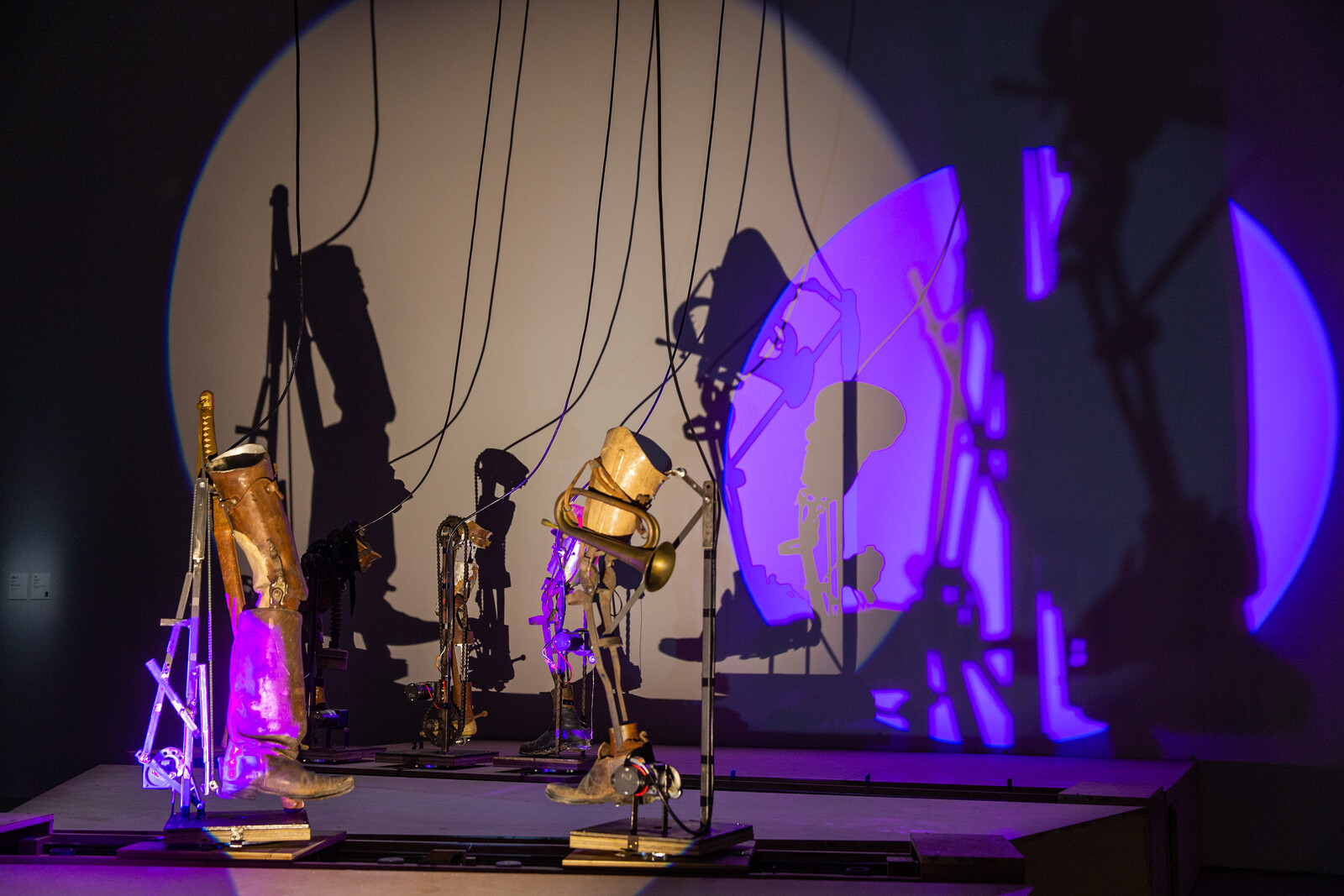Re-Present
March 25–June 25, 2023
No. 181 Zhongshan N. Road Sec. 3
Taipei 10461
Taiwan
The exhibition Kao Chung-Li: Re-Present has been on view at the Taipei Fine Arts Museum since March 25, 2023. Curated by Lee Wei-I, this exhibition collates senior Taiwanese artist Kao Chung-Li’s oeuvre that spans more than 40 years—his exploration of the essence of images and image machines via technologies such as photography, cinematography, installation, animation and audiovisual machines, his indefatigable examination of the praxis of audiovisual production, and his response to the course in which humanity has been influenced and revolutionized by artifacts from the Second Industrial Revolution to date. Giving prominence to the material conditions of production, the Chinese title of this exhibition, literally translated as “life determines consciousness,” owes much of its inspiration to the famous quote of historical materialism from Karl Marx and Friedrich Engels. “Re-Present,” the English title of this exhibition, echoes the title of Kao’s 2007 solo exhibition “At Present” and creates the relations of production between pictures and the artist’s personal memories 16 years later.
Born in Taipei in 1958, Kao graduated from the National Taiwan Academy of Arts in 1979. He is not only one of the pioneers of image experimentation in Taiwan, but also a founding member of the avant-garde exhibition Xirang in the 1980s. Kao actively engaged in photography in his early years when he was a printing major. Then, inspired by the occidental image history, he has tirelessly studied the principles of imaging and invented handmade tools for image production by himself. The artist seeks to introduce Marx’s materialism into visual arts and thereby spark discussions, insofar as to develop our own image-machine culture and thinking. He once said: “We belong to a nation or culture without an image civilization, yet we have our own picture history, and therefore producing pictures with technologies is a crucial approach worth cultivating, which can be linked to cinematography, photography, and animation. Thus, we can create our own images.” As a result, Kao has long engaged in media archaeology and focused on the dialectical reasoning about the production of perception, audiovisual technology and history, whilst relentlessly pursuing emancipation within the current system of production.
This exhibition features more than 40 pieces of Kao’s oeuvre, including those debuted in his very first solo exhibition at the American Cultural Center in Taipei in 1983 (ASA to the Power of N, Mosquito Repellent Incense, and Hands, or a Photo), his iconic art series Aspects & Visions, Photochemical-Mechanical Live Image Projection Device, Slideshow Cinema, Camera Lucida Cinema, Object Book, Position of Time, and Cinemas in Suitcases, as well as the seven large-scale kinetic installations he created specifically for this exhibition. Bearing witness to the underlying philosophy and the pluralistic forms of Kao’s oeuvre along the way, this exhibition encompasses hand-drawn animation scripts, sculptures, photographs, experimental films, and even patented optical toys. The artist invents and produces his own photochemical-mechanical devices, and combines them with the images, negatives, and audiovisual industrial apparatus he has collected. His approach reflects the perceptual conditions of the audiovisual on the one hand, and challenges the concepts of audiovisual technology production on the other.
In the era of technocapitalism in which productivity and control evolve in tandem, Kao yields his perceptive insights into the emotional/aesthetic politics of optics and acoustics within the audiovisual industry. He invents handmade audiovisual mechanical devices by himself, grasps his relation to objects from an alternative perspective, reconnects himself with production, and thereby makes his own history. Just as Marx and Engels argued: “[…] people who develop their material production and their material transactions also alter their thinking and the products of their thinking with the actualities of their life;” and therefore, “it’s not consciousness that determines life, but rather life determines consciousness.”
For more information, please visit the website.









